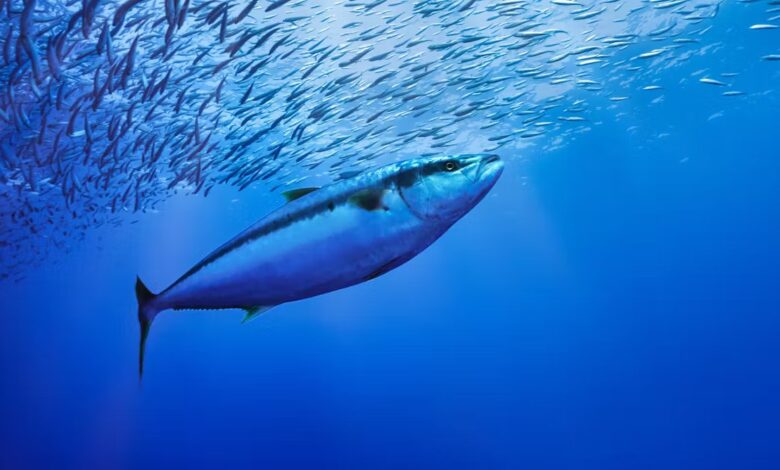
A large yellowfin tuna hunts in the cool, clear waters of the Pacific Ocean. Photo Credit: Jnel/Shutterstock
Environment The WorldThe High Seas Treaty Could Soon Be a Reality
Fifty states have ratified the High Seas Treaty, a crucial step to grant a greater level of protection for marine life and the international seabed threatened by climate change effects, overfishing, plastic pollution, and other human-caused issues.
Of the 60 countries required to ratify the treaty to bring it into force, 50 have done so, and 19 have promised to do so by the end of the year, including Australia, meaning that their governments must consent to be legally bound by the terms of the treaty.
In 1982, the Law of the Convention was signed, giving all coastal nations rights over the waters extending to 200 nautical miles, or 370 kilometres, from their coastline. High seas account for nearly two-thirds of the world’s ocean and are home to a panoply of unique species and ecosystems. In 2023, the High Seas Treaty, formally known as the Biodiversity Beyond National Jurisdiction Agreement, was adopted by consensus. Once it comes into effect, the treaty will give the world a way to set up large marine protected areas in the high seas – this applies to the seabed, subsoils, and ocean floor lying beyond the continental shelf of a coastal state – where restrictions on activities like fishing and shipping will be enforced. The High Seas Treaty will help reach key conservation goals set under the 2022 Kunming-Montreal Biodiversity Pact, calling for protecting 30% of the world’s marine and coastal habitats by 2030.



